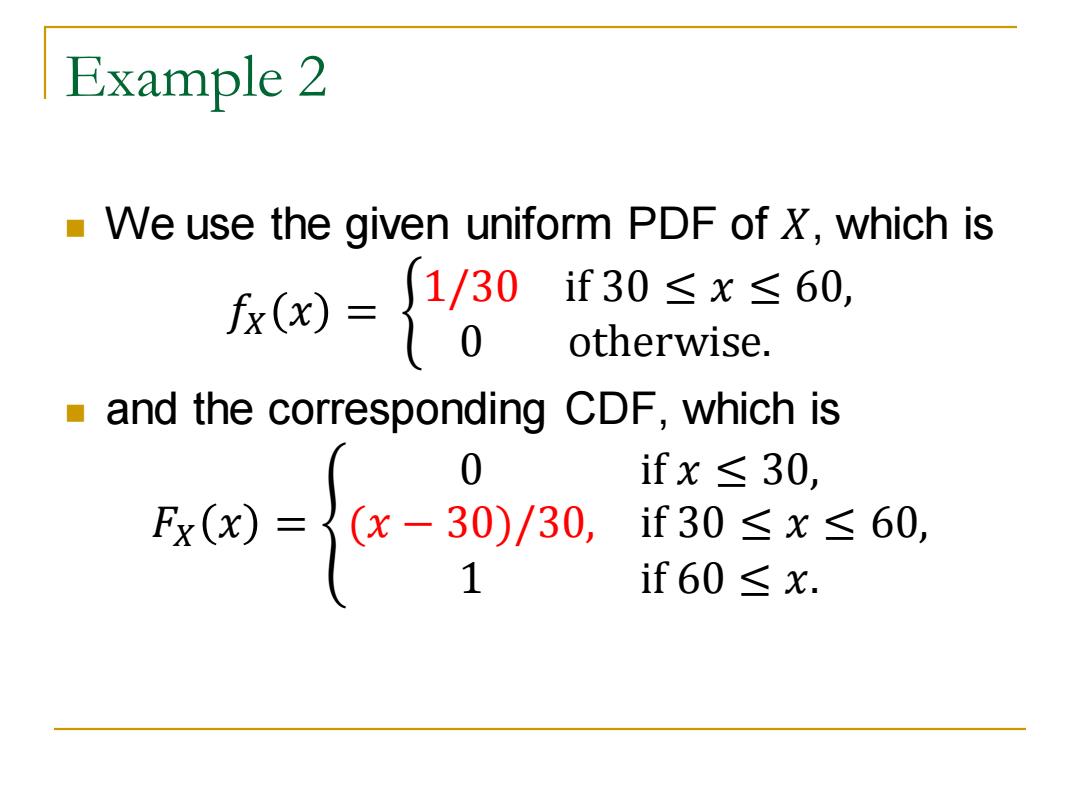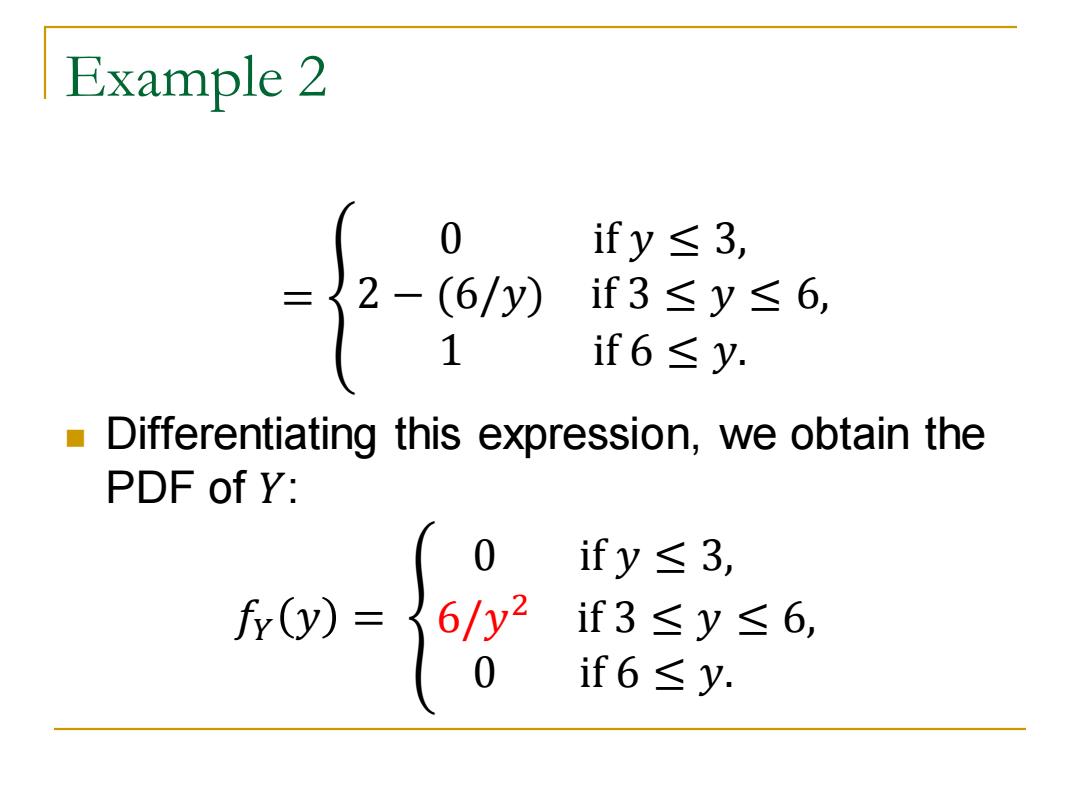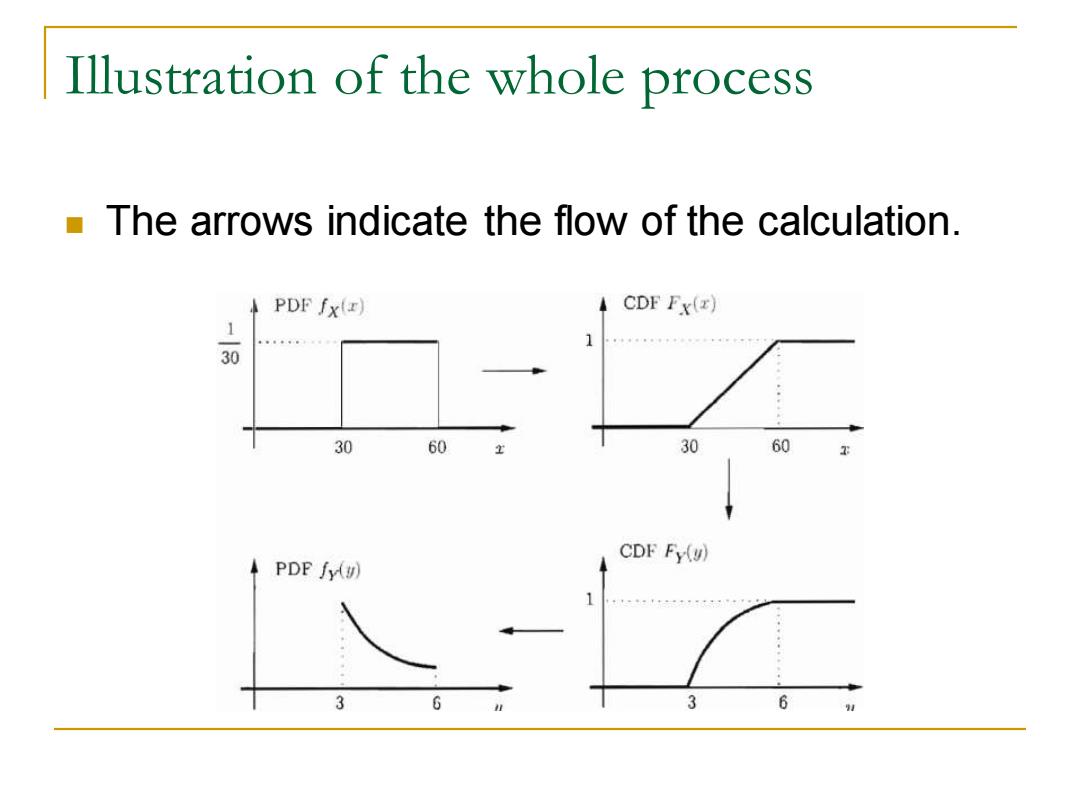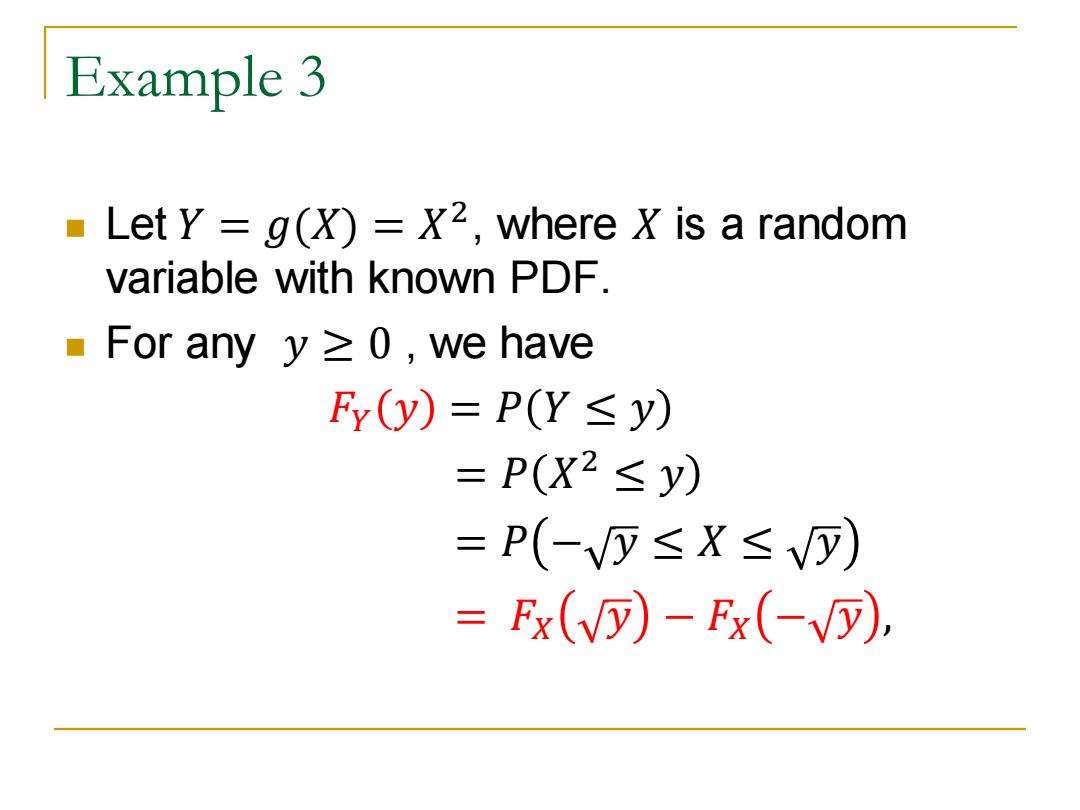
Example 2 We use the given uniform PDF of X,which is =80 if30≤x≤60, otherwise. and the corresponding CDF,which is 0 ifx≤30, x0-{-30/30 if30≤x≤60, 1 if60≤x
Example 2 ◼ We use the given uniform PDF of 𝑋, which is 𝑓𝑋 𝑥 = ቊ 1/30 if 30 ≤ 𝑥 ≤ 60, 0 otherwise. ◼ and the corresponding CDF, which is 𝐹𝑋 𝑥 = ቐ 0 if 𝑥 ≤ 30, (𝑥 − 30)/30, if 30 ≤ 𝑥 ≤ 60, 1 if 60 ≤ 𝑥

Example 2 Thus, m-(sX-1-() 180 0 ifx ≤ 60 0- 18 30 了1- y if 180 180 ≤ y ≤ 30 60 30 180 1 f ≤ 30 y
Example 2 ◼ Thus, 𝐹𝑌 𝑦 = 𝑃 180 𝑦 ≤ 𝑋 = 1 − 𝐹𝑋 180 𝑦 = 0 if 𝑥 ≤ 180 60 , 1 − 180 𝑦 −30 30 if 180 60 ≤ 𝑦 ≤ 180 30 , 1 if 180 30 ≤ 𝑦

Example 2 0 ify≤3, ={2-(6/y) if3≤y≤6, 1 if6≤y. Differentiating this expression,we obtain the PDF of Y: 0 ify≤3, - if3≤y≤6, if6≤y
Example 2 = ൞ 0 if 𝑦 ≤ 3, 2 − (6/𝑦) if 3 ≤ 𝑦 ≤ 6, 1 if 6 ≤ 𝑦. ◼ Differentiating this expression, we obtain the PDF of 𝑌: 𝑓𝑌 𝑦 = ൞ 0 if 𝑦 ≤ 3, 6/𝑦 2 if 3 ≤ 𝑦 ≤ 6, 0 if 6 ≤ 𝑦

Illustration of the whole process The arrows indicate the flow of the calculation. PDF fx(r) CDF Fx() 30 60 30 60 CDF Fy(u) 4 PDFf切 3 6
Illustration of the whole process ◼ The arrows indicate the flow of the calculation

Example 3 Let Y g()=X2,where X is a random variable with known PDF. For any y≥0,we have Fy(y)=P(Y≤y) =P(X2≤y) =P(-≤X≤V) =Fx(V)-Fx(-V列)
Example 3 ◼ Let 𝑌 = 𝑔(𝑋) = 𝑋 2 , where 𝑋 is a random variable with known PDF. ◼ For any 𝑦 ≥ 0 , we have 𝐹𝑌 𝑦 = 𝑃 𝑌 ≤ 𝑦 = 𝑃 𝑋 2 ≤ 𝑦 = 𝑃 − 𝑦 ≤ 𝑋 ≤ 𝑦 = 𝐹𝑋 𝑦 − 𝐹𝑋 − 𝑦